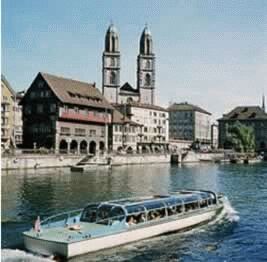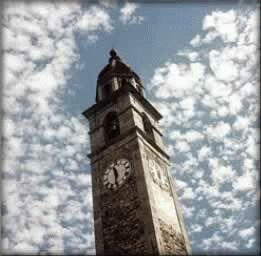|

Zürich
 Switzerland's
most populous city is reputed to be the intellectual and cultural
capital of the nation. It's most famous burst of creativity came
in 1916 when the Dada art movement emerged from the Cabaret Voltaire
- strangely enough at exactly the same time those playful dudes
Lenin and Trotsky were also in residence. Today the city is more
famous for its pinstriped gnomes and art galleries, and for the
way it manages to balance finance and aesthetics better than anyone
but Sothebys. Switzerland's
most populous city is reputed to be the intellectual and cultural
capital of the nation. It's most famous burst of creativity came
in 1916 when the Dada art movement emerged from the Cabaret Voltaire
- strangely enough at exactly the same time those playful dudes
Lenin and Trotsky were also in residence. Today the city is more
famous for its pinstriped gnomes and art galleries, and for the
way it manages to balance finance and aesthetics better than anyone
but Sothebys.
The city is situated some 400m above sea level, straddling the Limmat
River as it enters the northern end of Lake Zürich. The pedestrian
streets of the old town contain most of the major sights, including winding
alleyways, 16th and 17th-century houses, guildhalls and courtyards, and
rather a lot of fountains (1030 if you're taking notes).
The elegant Bahnhofstrasse was built on the site of the city walls,
which were torn down 150 years ago. Underfoot are bank vaults crammed
with gold and silver and other booty - unfortunately these are not open
to the public (we can't figure out why). For the clock-watchers, the 13th-century
tower of St Peter's Church (pictured-right) has the largest clock face
in Europe. The Fraumünster Church nearby is noted for the distinctive
stained-glass windows in the choir, which were created by Marc Chagall
in 1970 at the ripe old age of 83.
 The
Museum of Fine Arts has a large permanent collection ranging from
15th-century religious art to the `modern' art of Monet, Manet and
Man Ray. The Swiss National Museum, housed in a pseudo-castle north
of the city centre, provides the ultimate rundown on the life and
times of the Swiss nation and, just in case you forgot you were
in Switzerland, has an interesting section on book-inscribing in
the Middle Ages. When the culture vulture in you can't take any
more, there are pleasant pathways along the shores of Lake Zürich
which pass picnic, sunbathing and swimming spots. The
Museum of Fine Arts has a large permanent collection ranging from
15th-century religious art to the `modern' art of Monet, Manet and
Man Ray. The Swiss National Museum, housed in a pseudo-castle north
of the city centre, provides the ultimate rundown on the life and
times of the Swiss nation and, just in case you forgot you were
in Switzerland, has an interesting section on book-inscribing in
the Middle Ages. When the culture vulture in you can't take any
more, there are pleasant pathways along the shores of Lake Zürich
which pass picnic, sunbathing and swimming spots.
Hostels are located on the perimeter of the city centre and there are
a few budget hotels on the east bank of Limmat River. Accommodation can
be a problem during the summer months, so book ahead if possible. Nightlife
is centred on the streets around Niederdorfstrasse. This is also a red-light
district so don't be alarmed if you stumble bleary-eyed out of a club
on Sunday morning to be met by devout parishioners parading through the
sin-sodden streets singing hymns to anyone who will listen.
|

